Num. 3 - July 2015
Tutti gli articoli
Tutti gli articoli
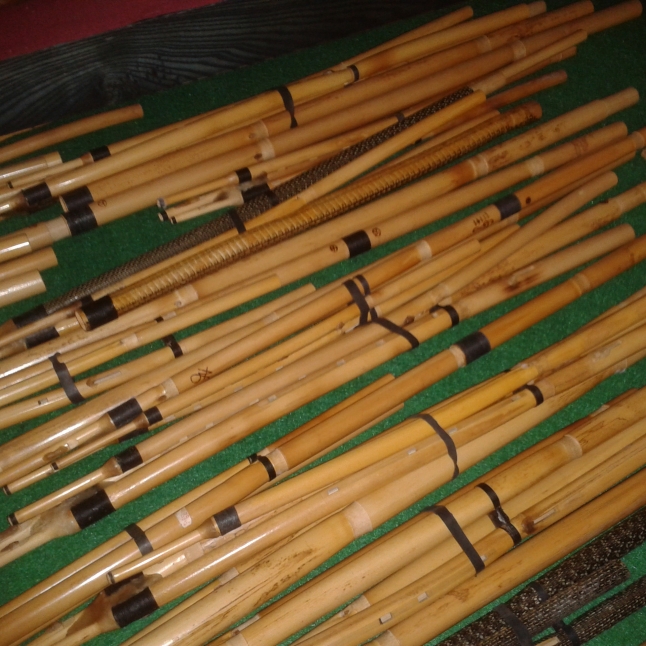
02 July 2015 A museum that today there is not any more
There was a priest. There was music. Finally, there was a passion.
This is the history of a museum that could be, but, it was not. A history that is completely Sardinian.
From a musical point of view, Sardinia has always been very prosperous; for many centuries, song, dance, balls and various sounds of the traditional instruments, represented an essential element in the life of lots of communities.
In Tadasuni, a small village where more or less 150 inhabitants live and that is situated on the western side of Omodeo Lake, there were the greatest collection of Sardinian traditional instruments.
This extraordinary collection was born a long time ago thanks to the big passion that the priest of the village, Don Giovanni Dore, had for music. All the examples that made up this collection were found by the priest himself in every places of Sardinia and during the time, that passion changed in a systematic collection that was more numerous and that was able to furnishing proofs of the history of traditional music, used by Sardinian people in the most important occasions, of rejoicing during the anniversaries such as weddings or celebrations of the village and of torment, such as in the case of sacred rites of the Sacred Week.

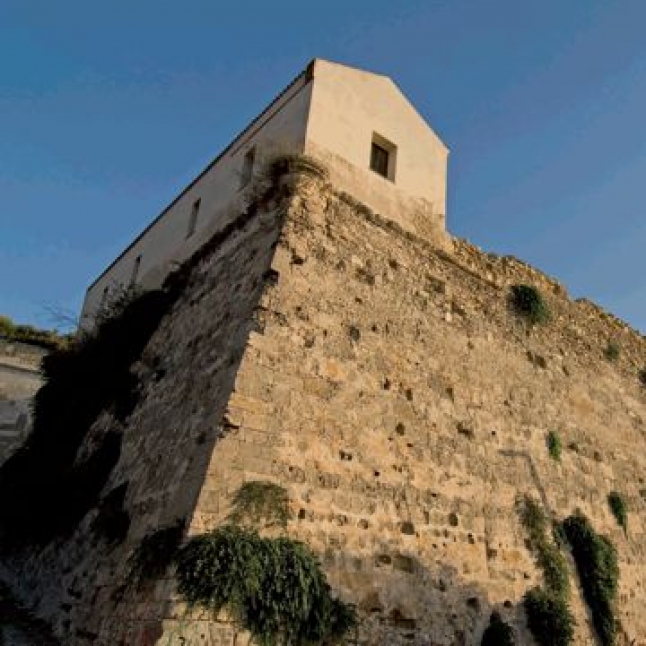
02 July 2015 Story of a Ghetto that was not Jewish
The impregnable stronghold of the Castello District, towered village meeting to the war reason of the Karalis Pisan and Aragonese colonizers survives a precious from historical and architectural value.
The "Ghetto degli Ebrei", (the Jewish Ghetto) of Carrer de Santa Creu - the Via Santa Croce that slides the Bastion in one of the most beautiful views of the city of Cagliari, acquired its identification name only in the last century, when in a hurry or maybe in need of synthesis and semantic agglomeration of nomenclature operations has forgotten its historical function of military pillbox to redefine itself at the distracted citizen as Jewish ghetto.

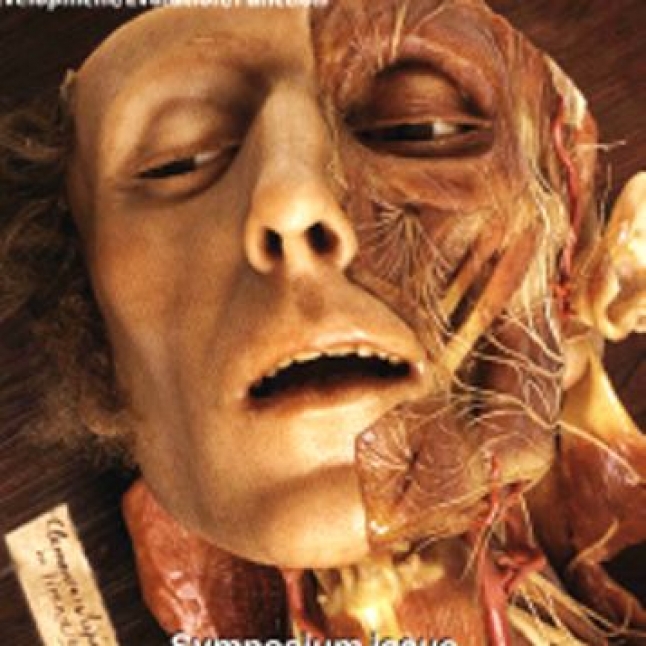
02 July 2015 "What have you done to my girl?"
An eye to the side, as thoughtful and finely crushed, his mouth half open to catch the last breath, his face and chest flesh off in layers, yet permeated by demure elegance, where the intimacy of the plot of veins, nerves, muscles and casings is shown as tree roots emerge from the ground, revealing the ingenious existence.
The glaze lying sideways, as thoughtful and finely crushed, the mouth half open to catch the last breath, the face and chest fleshed off in layers, yet permeated by demure elegance, where the intimacy of the plot of veins, nerves, muscles and casings is shown as tree roots emerge from the ground, revealing the ingenious existence.
It is the twelfth table Anatomical by Clemente Susini, that with other sixty-three prepared and twenty-three windows defied two centuries of history of wax modeling and chose the city of Cagliari to continue in perpetuating the beauty of human bodies of which are true sculptural representation.
Who knows what would today their ingenious modeler if he could interact once again with the anatomist Francesco Antonio Boi, faithful co-promoter: in difficult times, when the wax were taking shape in the fervor of the shops of the Florentine school of the nineteenth century and under the protection of the famous founder of the Museum of the La Specola Felice Fontana, probably could not have imagined the the destiny of the wax would be an island and a common purpose of enlightened men that the Anatomical Institute of Cagliari hosted in the most delicate moment of Susini's masterpiece.
Prof. Castaldi before and Professors Maxia and Cattaneo later, nearly bewitched by the beauty of the collection, protected them from the disasters of the Second World War and studied in deep until the reconstruction of the history of a symbiosis between art and science that does not seem to find no equal anywhere in the world.
Alessandro Riva, Professor emeritus at the University of Cagliari, Professor of Anatomy at the Faculty of Medicine of the University of Cagliari, Professor of History of Medicine and decennial curator, almost foster father of modeling wax of Susini, always known that and does not forget it.

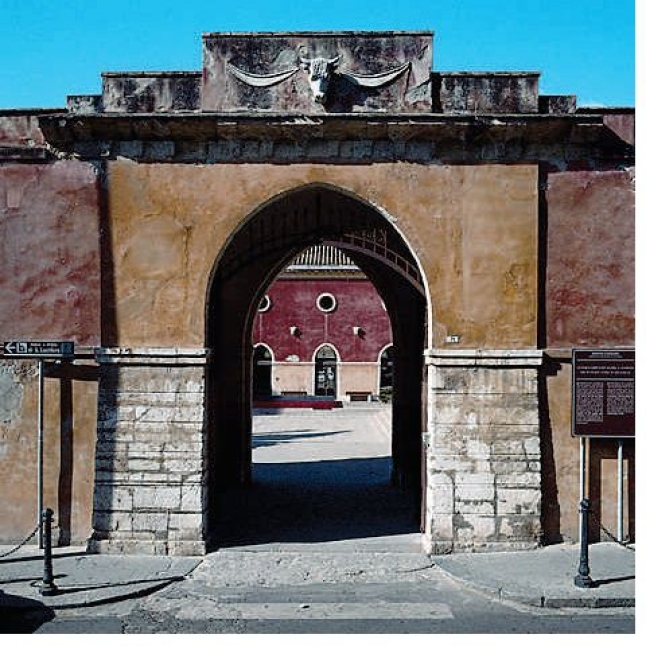
02 July 2015 EXMÀ, from the lasso of the insogadoris to the plots of culture
The uses stratification of the historical buildings in the cities with an ancient history are a cultural wealth, often alien to the citizens themselves, unfamiliar to replace a glance of a desire to memory and belonging that result, in them, the desire to try to live the same places through the eyes of their previous uses. This substratum of life, content and architecture is often a series of dichotomies, paradoxes, strident dissonances.
In the limestone halls of the cultural center Exmà of Cagliari, where, if the echo of the architectural lives and past uses could regurgitate from the walls and the terracotta tiles, those contrasts would resound with the ferocity of the knife and the roar of a painful moan. A slaughter-house abattoir, in other words, or brutally, an abattoir. It was the first public citizen slaughterhouse and was a destination for insogadoris (men with lasso) that crossed the streets Villanova district towards the slaughterhouse until 1964.

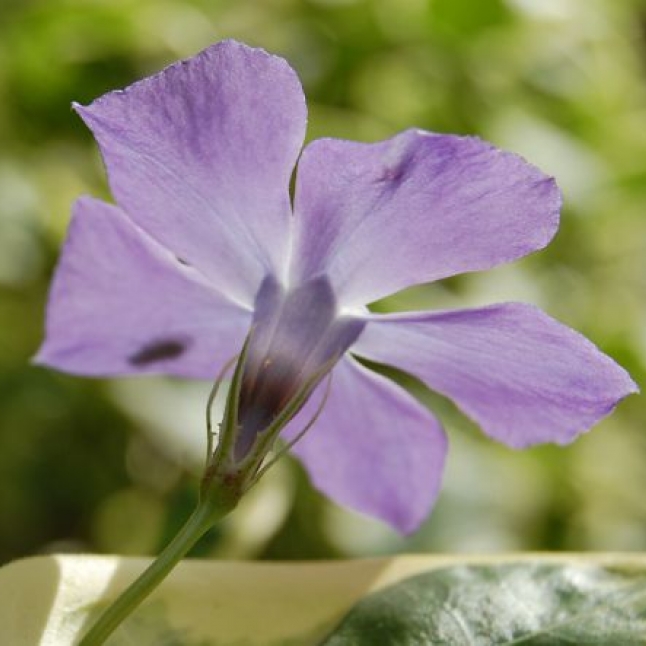
02 July 2015 The Herbarium of Cagliari
The nineteenth-century building along Sant'Ignazio from Laconi Boulevard, that hosts the Institute of Botany, houses one of the most important cultural innovations of research visited by experts come from all over the world, the Herbarium Museum.
Situated into the majestic flower path of the Botanical Vegetal Garden, is presented as an atypical museum, because it is not expositive, but dedicated to the preservation of the exsiccata, dehydrated plants that are classified with a scientific and educational aim.
The Herbarium was born during the establishment of the Botanical Vegetal Garden (1862-1866) by Patrizio Gennari and it has been taken a census thanks to its potentiality and to its heritage in the Index Herbariorum with the abbreviation of Herbarium CAG and it adheres to the CIMCAS (Interdepartmental Center Museums, Collections and Historical Archives of the University in Cagliari).
It is composed by almost sixty-five thousand exsiccata of vascular plants to which important collections of Algaes, Bryophytes, Mushrooms and a peculiar Cecidoteca, namely a collection of "Galle", are added. There are exsiccata with an excellent state of conservation, the most ancient date back to 1857 and they represent important proofs of the history of Botany in Sardinia.

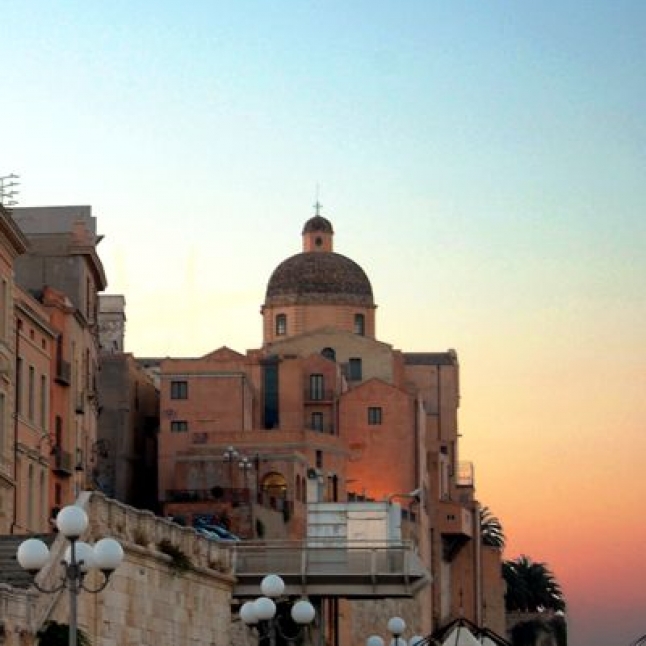
02 July 2015 The Duomo Museum of Cagliari
The walls of the Castello of Cagliari (Castedd 'e susu , the upper castle) hold a precious site of sacred art, the Cathedral Museum.
Along the Fossario you can admire the city panorama in all its beauty, a prelude to the wonders contained in the museum. The exhibition structure is derived from the premises of what were the seminar and the prisons.
Restored with funds from the Jubilee, after the intervention of the director, Ing. Maria Lucia Baire, the museum was opened in 2004 to show the precious heritages held, for long time, in the Cathedral of Santa Maria.
The exhibition opens with the sculpture group, The Mourning of Christ, life sized, hold in a small room called the Lamentation. The seven statues, dated around the end of 1400, made of polychrome wood, are of Catalan School. The similarity with the group of Santa Ana of Barcelona suggests that to produce them have been used preparatory cartoons to allow a faithful reproduction. The sculpture of Christ, instead, is of a later period.

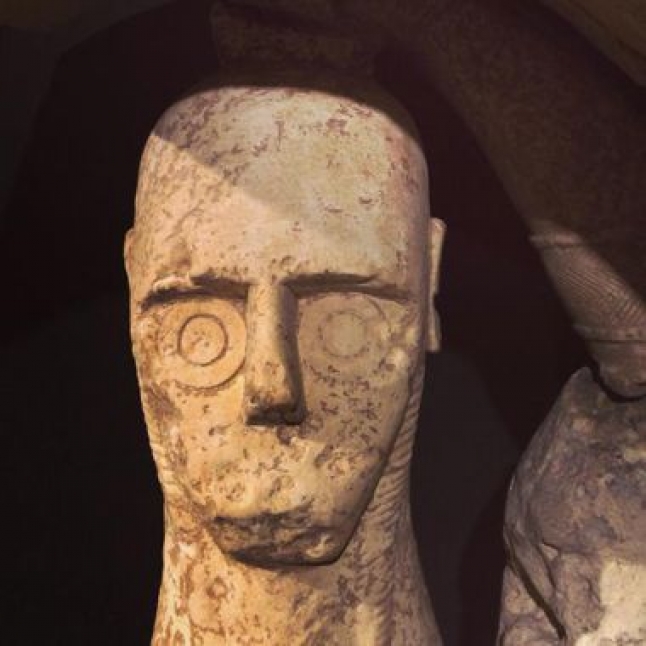
02 July 2015 The archaeological civic museum "Giovanni Marongiu"
Archaeology (from the Greek language ἀρχαῖος "old", λόγος "study" ), formerly indicated as "science that was auxiliary of the history", allows to study the most remote civilizations and their relationship with the present, through the collection of documents and the analysis of human and biological relics, as well as artifacts and architectures, using, as the first big tool, the stratigraphic digging out. Sardinia offers a wide object of study with its archaeological sites.
The rural aggregate in Cabras hosts the civic museum dedicated to the local administrative clerk Marongiu, Minister for the extraordinary interventions in the South Italy in the last Administration Andreotti. The district, situated in the area of the Campidano in Oristano along the left bank of the basin Mari Pontis, is called Masone de Capras since the end of the Eleventh Century, time frame to which the first establishments into the current residential area come from, after the depopulation of Tharros, because of the raids by the African corsairs.
All along a place symbol of culture, Cabras, thanks to the civic museum, is a promoter of a rich exposition of archaeological evidences, marks of the local territory since the Prehistory to the Middle Ages and guarantee of the peninsular history of Sinis.

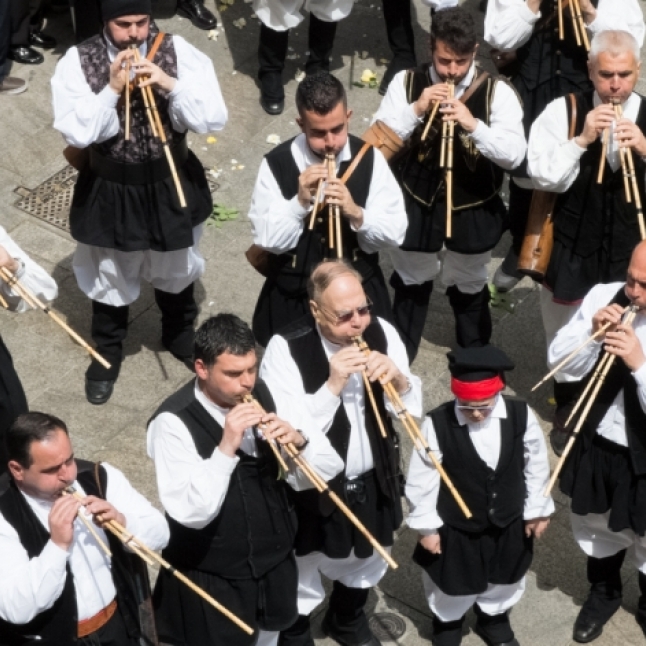
01 July 2015 Sonus de su mundu: music can be safeguarded in a museum of international instruments
From an adolescence passion for the musical instruments in general to a love more specific and detailed for numerous samples come from all over the world. So, the Antonio Ghiani’s idea was born for instituting the Museum Sonus de su mundu, in Assemini, in the Province of Cagliari. Thirty years ago, his dedication for launeddas led him towards the field of popular instruments that are typical of other Countries. Comparing the instrument that represents Sardinia, he had the will to know the place where those instruments were elaborated and realized.
Once, musical instruments were divided according to the material with which they were built – for instance woodwinds, brass instruments, etc. Then, they were identifying for kind, through the system Hornbostel-Sachs, according to which they are divided in five families, making a connection with the method of production of the sound: Membranophones – the sound is produced by the vibration of a tense membrane; Aerophones: they emit the sound through an inner tube that vibrates into the instrument; Ropephones: they produce the sound through the vibrations produced by the ropes that belong to them and that can be beaten (piano), plucked (harp), rubbed (violin) or they can be made vibrate thanks to the wind; Idiophones: the sound is produced by the vibration of the structure of the instrument itself; Elettrophones: the sound is caused through the electricity.
Into the Museum there are these different kinds and their arrangement is studied in a perfect way: as soon as the visitor comes in, he is astonished for the multitude of the samples that are present. Then, he pays specific attention to the right side, where there are the instruments typical of Sardinia, among which that more representative stands out: launeddas. A clear choice in the arrangement of these things, by now considered artworks with an undisputed prestige. The beginning is represented by the instruments come from the Island, to which those foreign are personalized and resembled, for replaying the same music. Su tumbarinu de sa cointrozza, su triangulu, sa matracca, su tumbarinu cun criccos, sa matracca ‘e arroda, su sulittu e tamburinu – this one was used for emitting the announcement and for keeping the rhythm and it is still used in Spain and Argentina.
Carrying on the visit, you can note instruments that come from Africa: Cameroon, Morocco, Tunisia, Egypt, Ethiopia, Kenya, Republic of Guinea, Mali, Senegal; from America, above all that of South, as Bolivia, Chile, Ecuador e Peru; from Europe: Bulgaria, Greece, Germany, Hungary, Russia, and from other East Countries, from Mongolia, from Far East, China, Tibet, Vietnam, Cambodia, Siam, India. This one offers instruments typical of its classic music, too. The instruments and the Countries represented in the collection are a lot.

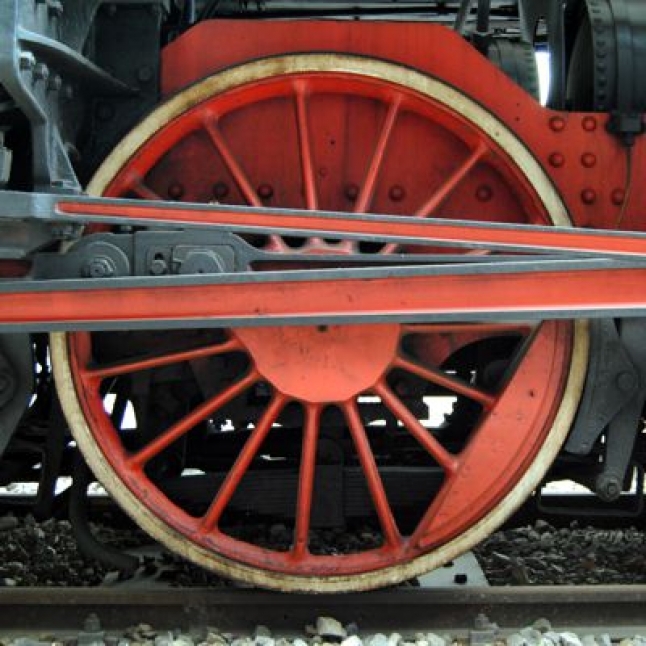
01 July 2015 The Sardinian Rail Museum: a station into a museum
Passion and respect towards common things, that belong to the trainman’s life and to his daily job, represent the basic feelings for the building of a museum out of the ordinary, as the Sardinian Rail Museum in Cagliari. The preservation of items with a big quality is important for the protection and the recovery of elements that, otherwise, would be excluded and lost.
Instituted in 1985, the Museum was born thanks to the idea of the District Director of that period, Antonio Sanesi, who, passionate about rail industry archaeology, loved collecting proofs of the past that were spread everywhere in the stations, in order to salvage things considered important by him and he wanted that they became important for other people, too. So, he allowed to know those evidences, setting up an exhibit into the City of Museums in Cagliari, in 1983. This event was appreciated so much so they decided to give it a concrete visibility, making it permanent through the building of the Rail Museum, that now is managed by Trenitalia and Rete Ferroviaria Italiana.

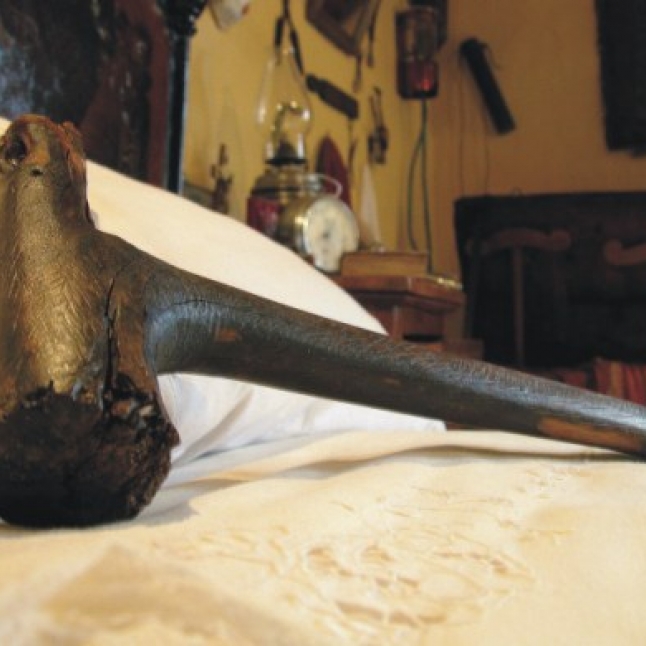
01 July 2015 The last hammer of the "Femina Agabbadora"
The femina accabbadòra or femina agabbadòra literally is the one who hits. The Sardinian word "acabu", finish, is a term clearly derived from Spanish: "acabar" that means literally "hitting on the head."
A clear word through a gesture as much eloquently to give the finish on the head, an act that encloses unequivocally the function of this mysterious and emblematic figure.
It places itself in the groove of the existence, between life and death, under an aspect of the first order, to say the least, surprising: the woman who gave death, also gave
life, because as there was s'accabbadora who helped to die, there was against the midwife who helped to born. And it was the same person.
This opposite and contrasted dualistic aspect of giving life and death, would be enough to distinguish, in a dignified manner, one of the most controversial and impenetrable symbols of Sardinian old times; a past not too far away.
Around this archaic form of euthanasia, lately, it has been written and said a lot, it has been discussed the social role that this ambivalent symbol has had, the veil of secrecy and silence that has always hovered around its name and the halo of mystery that constantly has wrapped its last fatal act.
The line between life and death is very thin, when the sick person tired and suffering awaits its hour. But in all this there is something deeper, more intimate, more real. This woman, mind you, not kill, but gave the death (putting an end to the suffering).
In Luras there is an amazing place that, as well as interesting exhibits of the culture and traditions of Sardinia, holds a hammer of the femina agabbadora, the tool used to give the longed death to the dying sick person.
Pier Giacomo Pala, owner of the museum Galluras, which houses the famous hammer, has devoted thirty years of study to this figure and wrote a book titled - Anthology of Femina agabbadora - where he says, among other things, as he has discovered this incredible finding.
This story is primarily the story of a stubborn and arduous search, lasted years, and an incredible and unexpected discovery.
"I waited so long, perhaps too much, someone to help me to write down, put in order and edit the collection of the material, which, over the years, I could find about the femina agabbadora.

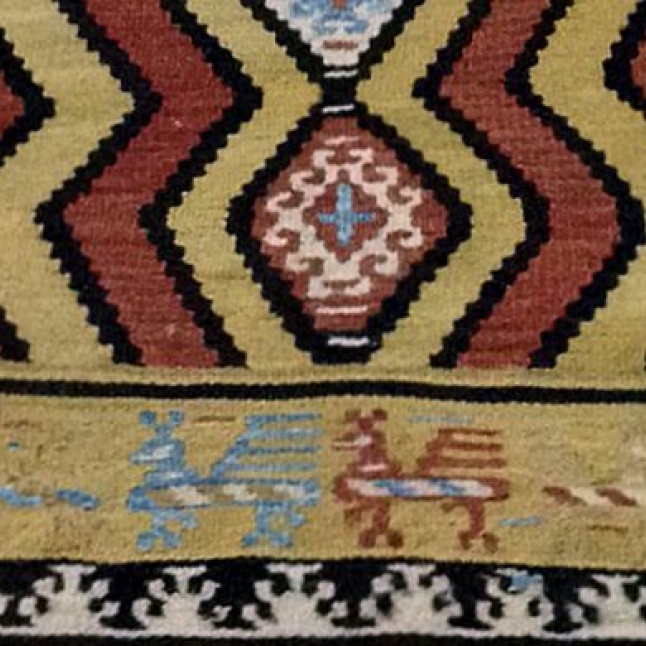
01 July 2015 M.U.R.A.T.S.
Samugheo has always been one of the most important villages in Sardinia for the textile art. Its geographical isolation was a key element in the conservation and preservation of the cultural tradition and craftsmanship, one of the most prolific and original of the island. In the lovely village of Mandrolisai the traditional weaving is very flourishing and full of many fascinating aspects. The creation in 2002 of the Murats (Museo Unico Regionale Artigianato Tessile Sardo: Unique Regional Museum Sardinian Textiles Craft), was the direct result of this vocation, aimed at preservation of the memory not only of textile Samugheo but of the whole Sardinia.
The Museum exhibits an extensive collection of artifacts from all over the Island. Many of them are of great value and were recovered in different areas of Sardinia and exposed in the permanent section of the museum that is located on the first floor.
We reached the Museum Director, Dr. Baingio Cuccu, which tells us about the most ancient and precious artifacts in the structure and all the initiatives that are being carried out.

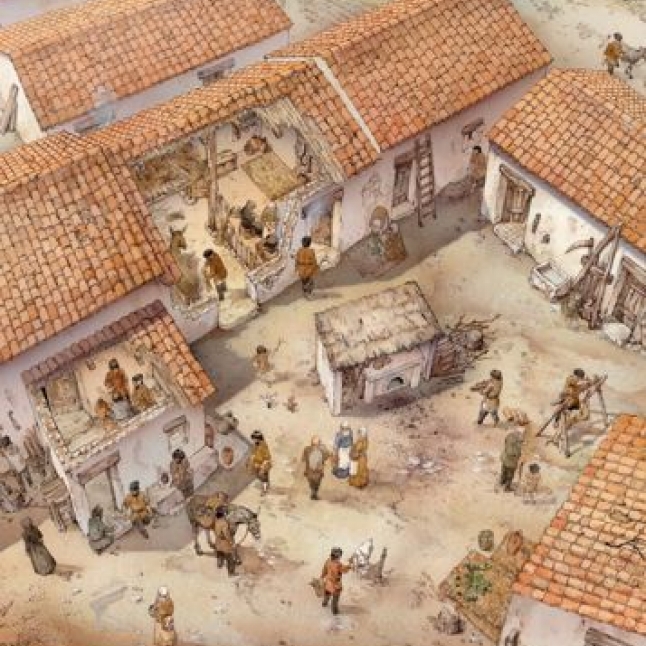
01 July 2015 Biddas Museum of Sorso
A museum dedicated to the depopulation and the abandonment of settlements. A Sip, town of fourteen thousand inhabitants a few kilometers from Sassari, on the top floor of the remarkable Baronial Palace, a museum that takes care of this; or all those population centers which in the past have failed to survive and, for one reason or another, have not reached our days.
First museum in Italy dedicated to the theme of the depopulation, Biddas, Museum of the marooned villages of Sardinia, exposes accurately and exhaustively, starting from the processes of displacement of modern times, a journey of considerable charm that comes from cases of depopulation in the Middle Age and that offers a very interesting key to understand about the causes that led to the abandonment of these unlucky villages.

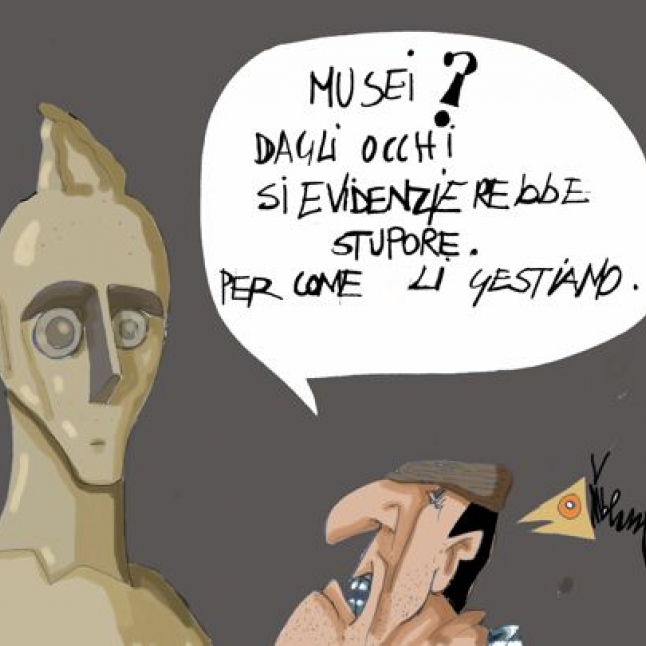
01 July 2015 Musea of Sardinia

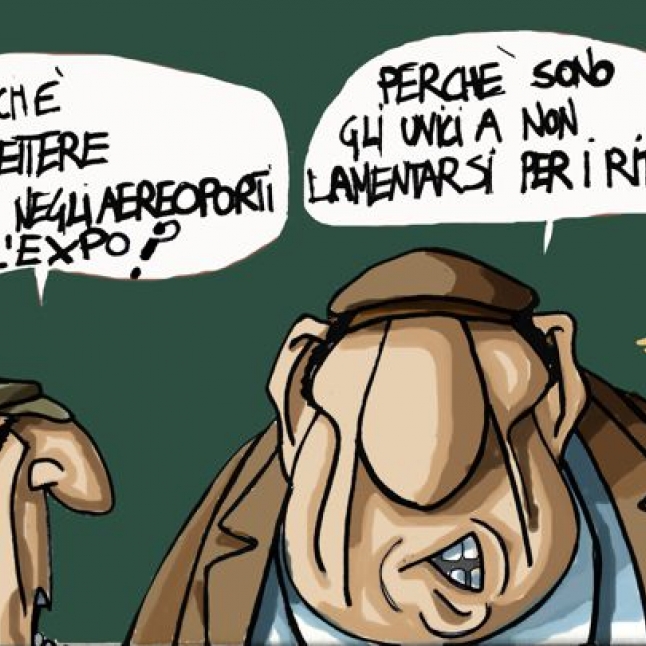
01 July 2015 I giganti all'Expò


01 July 2015 Museum of the sheep farming culture of Fonni
The life of the shepherd is hard! His hard life made of misery, hunger, loneliness and sacrifice has been celebrated by many Sardinian poets and writers who regularly showed not only these tragic aspects but also the richness, authenticity and versatility of this figure, a central element of Sardinian culture for generations.
The community of Fonni is one of the Sardinian places where the presence of the shepherd has always been very strong and deeply rooted. The only way to revive this figure, to represent it in its natural essence was to "show it" through a museum and to define clearly and precisely its importance within the Sardinian society.

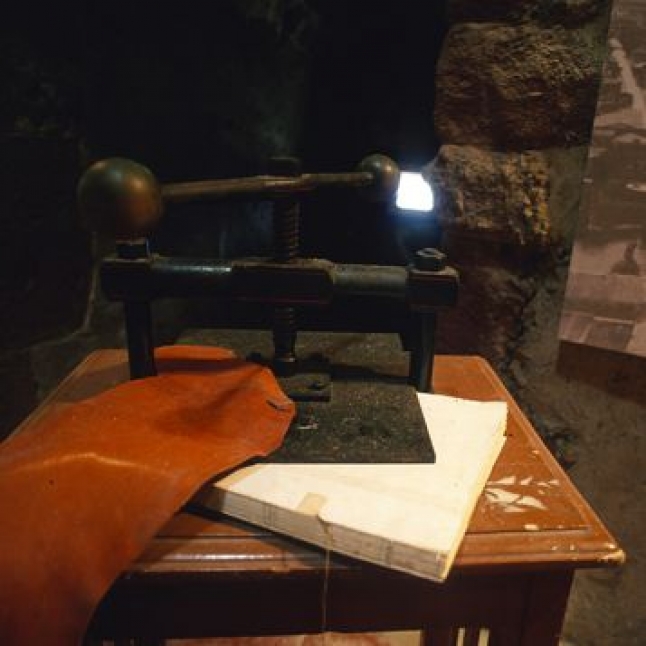
01 July 2015 The museum of the tanneries of Bosa
The town of Bosa in the late nineteenth century and throughout the first half of the twentieth century was the capital of the tanneries in Sardinia and in Italy.
Unique in its kind, the Museum of the tanneries of Bosa, is today a place of extraordinary importance to know all the secrets from the leather.
The Museum of the tanneries located in Via Sas Conzas, near the river Temo, was born with the intent to promote the ancient and fascinating work of the tanner, widespread in Bosa, which continued throughout the nineteenth century, until to 1962, when it closed definitively the last tannery.

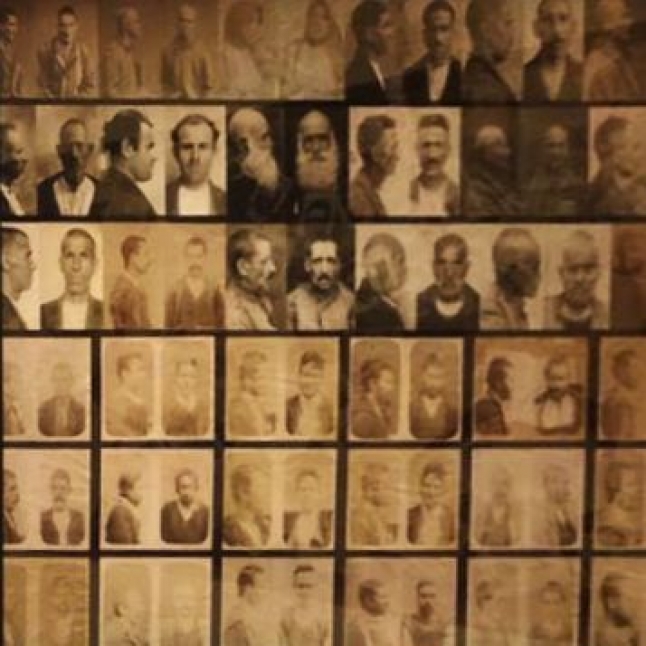
01 July 2015 The Banditism Museum of Aggius

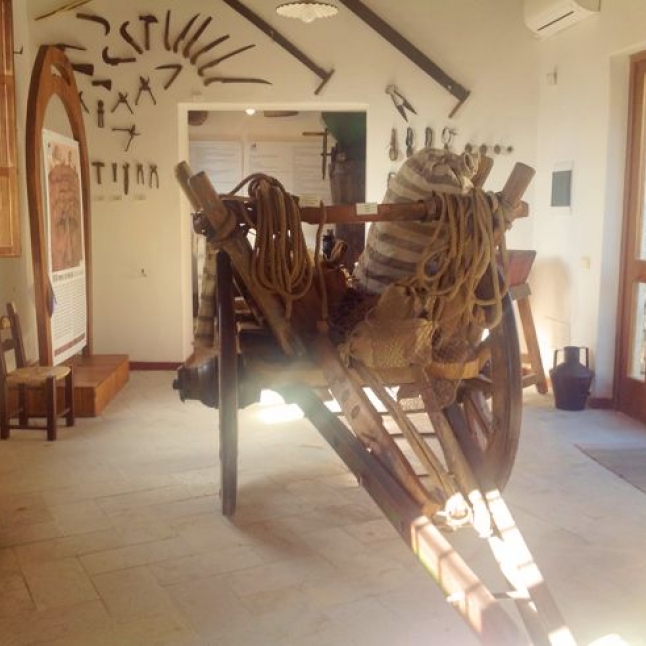
01 July 2015 Genoni, the charm of the Museum of the Jar Horse
The Museum of the Horse of the Jar is located in the heart of Genoni, in a beautiful Campidano house with a central courtyard, dating back to 1928.
Open in 2006, inaugurated the new staging on December 28, 2014, the Museum seeks at the important task of collecting through the witness (direct and indirect), of the inhabitants of Genoni, much of the historical memory of the village, to revive it in all environments that comprise it. All this accompanied by the constant presence of the Jar Horse, loyal and tenacious shadow that has always followed the mankind in all its vicissitudes; a needful key element.
A museum as a center for research and conservation of the territory historical memory, but also a museum as multifunctional center, as a place that can really involve the local population, through a series of short interviews, aimed to document memories in a profitable way, making them indelible.
And through these micro-stories that the museum really takes life and keeps really intact the memory, as the heart, which acts as a link with the area, preserving and proposing again it in a totally authentic way.
Last but not least is another aspect that makes the Museum of the Jar Horse absolutely original: illustrations, drawings, portraits, paintings of a great illustrator, Pia Valentinis, who through her works embellished with a small title containing the images, present in all areas of the Museum, is able to give a strong impulse, to provide a new poetic momentum, decisive and unexpected.

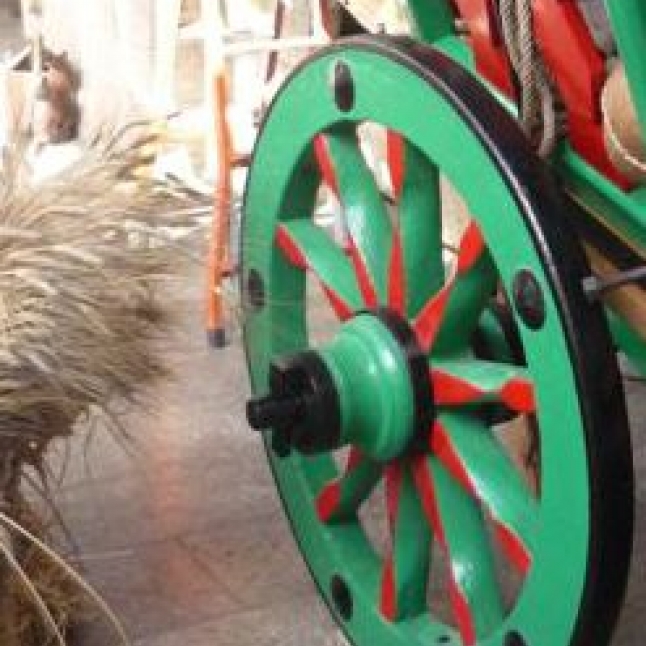
01 July 2015 The Cycle of the life: the museum of Sardinian origins
A majestic voice transmits traditions and original arts of Sardinia in the expositive halls of the Museum "The Cycle of the life", along the historical road Eligio Porcu, in Quartu.
"The sharecropper’s house", with the presence of five thousand evidences of different kind, remembers the way to live of the Sardinian agro-pastoral branch from its private slant.
This is the name of the Museum, resolutely emblematic and evocative, that allows to understand the aim of the museum exhibition: the central idea of daily life that links the whole Island.
